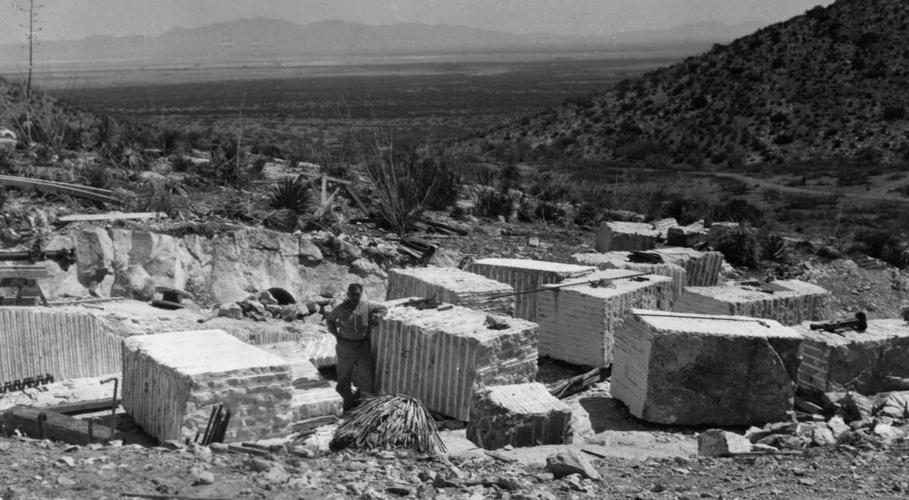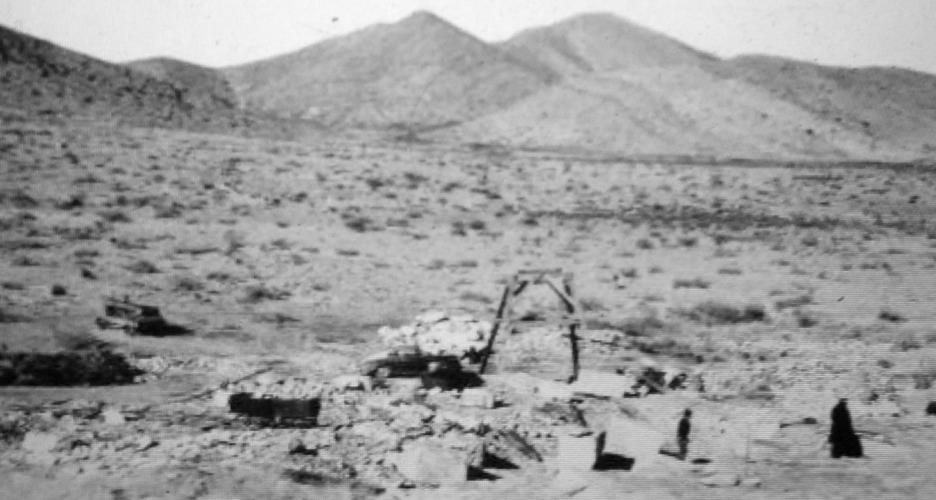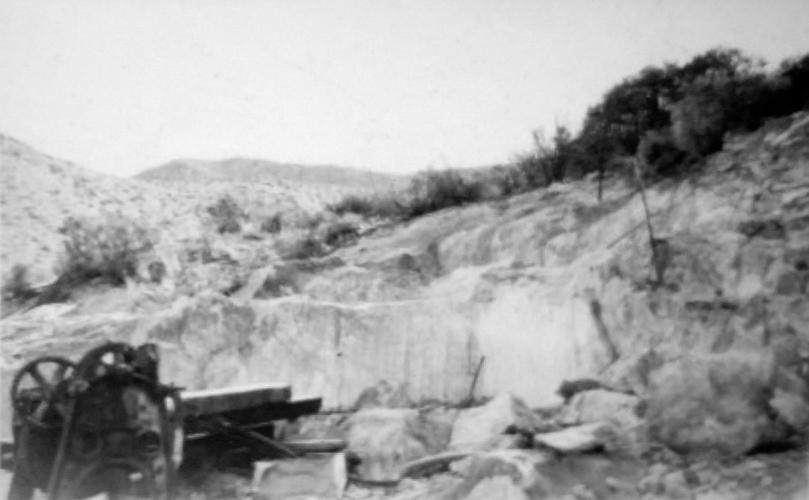The Ligier black marble quarries, discovered in 1909 three miles south of the town of Dragoon, were considered comparable in quality to the famous Carrara marble quarries of Italy.
Discoverer and namesake L.R. Ligier noted the black, weakly marbleized limestone with white calcite stringers in the Golden Rule metallic mineral district in the Gunnison Hills of the Dragoon Mountains.
He wanted to immediately exploit the site, as the high-grade marble would polish well and be resistant to weathering. However, litigation, world wars and protracted economic crises prevented production until the late 1940s.
The quarries became a family affair operated by the Ligier brothers, who shipped marble to Los Angeles, St. Louis, Kansas City, New York and Carthage, Missouri. The Ligier quarry shipping operation benefited from being only several miles from the main line of the Southern Pacific Railroad.
D.G. Ligier corresponded regularly with potential investors to finance the operations, even soliciting Charles H. Dunning of the Department of Mineral Resources for the state of Arizona for a contribution of more than $200,000. Ligier claimed the Dragoon Mountains quarry would become the future marble capital of the world. He emphasized the paucity of decorative marble quarries existing at that time in the United States and the need for decorative marble in the manufacture of tabletops, ashtrays, lamp stands and inkwell sets.
The Ligier operation produced terrazzo chips, a highly sought-after, colorful, crushed marble aggregate product. In 1949, the terrazzo was reported as selling for up to $35 per ton. D.G. Ligier believed the property could produce 40 tons per day.
The property developed into seven quarries by 1953, providing 20 varieties of marble. Commodities included surface marble and crushed stone. Mineral specimens included hubnerite, wollastonite and massive scheelite.
Production during the mid-1960s averaged 75 tons per week. The mine served the growing West Coast market for terrazzo chips and for materials used in prefabricated concrete slabs. A large shipment of blue terrazzo chips packaged in burlap sacks and transported by 22-ton truck loads from the mine reportedly was used in the erection of the Sears Roebuck & Co. building in Phoenix. The product was also used in roofing chips, chicken grits, stock feed, wainscoting and for flux in the mining industry.
Ligier-Arizona Marble Quarries Inc. reorganized in 1962 as Dragoon Marble Quarries Inc. At the time the site was producing 11 colors of marble and eight sizes of the stone. Popular colors included green, red Verona, cream, white, pink, gray, purple and black opal.
A crushing and screening plant was in operation several miles from the quarries by 1963. Eight men worked the plant, quarries and general maintenance duties. Equipment included a cyclone dust collector, 30-ton crude ore bin, jaw crusher, hammer mill and three storage bins for marble. The operation was not without risk, as one man was killed on a loader. The Marble Quarries Machinery Co. was asked to provide greater-capacity processing equipment, thus enhancing the production and profit figures.
Intermittent production continued when the Marbella Co. leased the property in 1976, producing rose-colored marble. Jim Chapman served as the mine’s superintendent after the Lieger marble quarries were reopened in 1985, owned by the Ligier estate. Several of the claims, including those known as the Godfather, produced dimension marble for fireplaces.
The mine is now within the boundaries of Coronado National Forest. Its surface area is comprised of fractured rock and devoid of soil and vegetation. Several attempts recently were made to reopen the quarries accessible on Lizard Lane or Forest Service road 689, formerly known as Dragoon Marble Quarry Road. One involved Alpha Calcit Fullstoff, an international producer of ground calcium carbonate, and its subsidiary company Alpha Calcit Arizona, beginning in the late 1990s. The company acquired the unpatented mining claims to the property and intended to mine the marble for use in high-quality paper production.
Further development at the quarries has been hindered, however, due to its classification by the Forest Service as being part of the Upper Dragoon Roadless Area. This classification remains controversial based upon the quarries’ altered landscape, small acreage and ease of accessibility by road.
SOURCES:
Bain, G.W. 1963. Marble Occurrences in the Dragoon Pass Area, unpublished geological assessment, 33p.
Duhamel, Jonathan. How bureaucratic errors are blocking a Marble Mine in Southern Arizona. Arizona Daily Independent. April 24, 2016. Accessible online at https://arizonadailyindependent.com/2016/04/24/how-bureaucratic-errors-are-blocking-a-marble-mine-in-southern-arizona/
Ligier Black Marble Quarries. 2011-01-2198, ADMMR mining collection, Arizona Geological Survey.
Ligier Black Marble Quarries. 2011-01-2199, ADMMR mining collection, Arizona Geological Survey.






